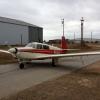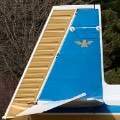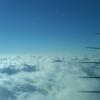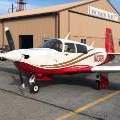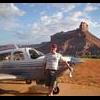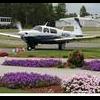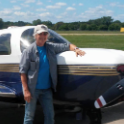Leaderboard
Popular Content
Showing content with the highest reputation on 03/07/2013 in all areas
-
You can also get a grease fitting rejuvenator. It is a penlike device with a plunger that has a thin penetrating oil in it. It will clean them out. I think the local parts house sells them .2 points
-
I started a thread about them about a year ago, but can't find it right now. Found it. http://mooneyspace.com/topic/5209-engine-crankcase-driers/?hl=%2Bengine+%2Bcorrosion#entry673962 points
-
I can set you up with a long Jag whose soft top can be easily removed. Then mount your fiberglass shell. Cast Iron V-12 included, bring your own micro-turbine. 13 mpg around town, 17-18 on the highway [roof down/up, ~75 mph]. Pretty sheet metal, nice sound, two place and rated [if you install a tow bar] to pull 6500 lbs. Not too shabby for a sportscar! About the same performance as Dad's 4x4 Suburban, but the 'Bus will carry more people and more cargo but with a fraction of the style. I'll have to keep an eye open for microturbine news. Sorry, a, I no longer make medical devices using tubing. We do a fair amount of molding, but our end product is surgically introduced into the eye to permanently replace the natural lens and restore/improve vision. At my last job, we bought extruded tubing by the 18-wheeler load, several each week.1 point
-
Jaguar is building micro turbine range extender cars. The micro turbines spool up and run when you are low on battery and power the electric drive system. The turbines are not used to Power the wheels directly, because throttle response of turbines for cars is terrible. They like to run at a certain power level and stay there. And micro turbines are much lighter than any internal combustion engine .. so thats the advantage in the car instead of an internal combustion engine hybrid car. If this catches on, the price of these micr turbines will come down at least for cars.1 point
-
You don't have to upgrade your G1000 to WAAS to get ADS-B. For ADS-B , you will indeed need a GPS WAAS position. However , you can choose to have a standalone ADS-B out (look at freeflight products) that gets a position from another GPS WAAS source. Install the box that has a GPS-WAAS sensor in it in the tail cone, be compliant and leave it alone. If you want to get the ADS-B in on your G1000, then you will need to look a pulling a wire from the box to your G1000. I have a non-WAAS 430 and I am not sure I will upgrade it to WAAS yet. I am not recommending. Just saying you have options.1 point
-
Once you get the fittings lubed you can put the little red rubber caps on them. Aircraft Spruce etc sells them, and they are inexpensive. Look jazzy, and improves TAS by several knots, at least. http://www.aircraftspruce.com/catalog/hapages/lubricaps.php?clickkey=130621 point
-
I generally spend more time fighting with the pneumatic gun than actually dispensing grease. The cheap manual gun I bought at Tractor Supply works well with the tube of AeroShelll #7. Take a few seconds and wipe the fitting clean before clipping on the gun. I always find and clean all 8 or 11 fittings before adding any, so that I can start with the farthest/hardest to reach and end up with the easy ones that won't get grease on my arm reaching past them. After a couple of annuals, it will get easier. Or at least that is my experience.1 point
-
1 point
-
And if a lot people had gone to Wikipedia before accusing the president of being a socialist they might have learned what a socialist system really is.1 point
-
There is a wating list to get into a hangar where I am, and for almos a year I was on tie down. I always hated driving away seeing it setting there in the weather. Sometimes when I would get there to pre flight I'd pull the dipstick and see ice crystals on the dipstick, so I did some reading and took action. I made a device that would pump air through dessicant and into the dipstick tube and a line that connected to the crankcase vent to circulate the air back through the dessicant. I never saw anymore signs of moisture once I started using my homemade engine dehumidifier. These things can be purchased and some units are dual units.With a dual unit you can pump through the crankcase and dry that air, while the other is connected to the exhaust and intake system drying the upper part of the engine. A friend made a very nice unit that does both upper and lower on his rocket. If you have power and dont fly regularly or can only fly those 20 or 30 minute around the patch trips I would strongly recommend using something to dry the air because the burning of hydrocarbon produces water just look at the tailpipe of cars allways dripping. I have seen some people leave their sump heater plugged up and I have heard that is a big mistake. If you think about it, heating the sump the heat rises inside the engine, the inside is warmer than the outside so the inner walls of the crankcase are colder than the air in the crankcase. What would happen in this situation? Well if there is moisture in the air inside of your engine, it will condense on the walls of the engine, and the droplets do no good thing for your engine. How can you get those out? Pump the engine full of dry air so there IS no moisture to condense. That is the only way to keep it dry. http://www.flyingsafer.com/2039.htm http://www.barkeraircraft.com/Engine-dryer-kit.html http://home.comcast.net/~r123rs/Documents/Engine_Dryer_Sport_Avi.pdf I even went so far as to put a small dehumidifier in the cabin to keep everything there dry as possible. Now I only use the engine dehumidifer if I fly trips less than 1 hour because the short trips usually dont give time for the engine temps to get get high and stay high long enough. If you try to make your own make sure you use some type of filter to insure none of the dessicant balls accidentally pumped into the engine, they will destroy the engine.1 point
-
I don't recall having ever met a strong left-leaning pilot -- even among those working low paying jobs and with massive loan debt.1 point
-
Yeah, it's really not that hard. Leave the black one in all the way, pull the blue one back a lil, and then use the red one to control power.1 point
-
I am based at APA I take off at gross any time the family travels. I learned here. 5880' is normal for me. It is just a matter of perspective. My first flight to sealevel (CRQ) was the eye opener for me. Had to push the mixture knob in all the way to keep it running and boy did it land slow.1 point
-
I'm in the same boat- learned to fly in a 172 in the Rockies based out of a field at 6000'. I now fly a M20J at a field in the Pacific Northwest at 4100' and fly often back into the Rockies. As the Red Baron wrote- it's not the crate, but the man in it that makes the difference. Risk mitigation is a large part of aviation. Some wont fly in the mountains without a turbo, but I see plenty of NA aircraft out there and fly my own there regularly. Others are perfectly happy flying low IFR in a single engine aircraft for extended periods- I don't count myself as one of them. As with everything- it's a matter of training, means, skill, luck and judgement. But to say that it's "suicide" (as some seem to thimk) to fly in the mountains in a NA aircraft is just as silly as saying its "suicide" to fly hard IFR in a single engine aircraft.... It is an addition risk, though, in both cases- one that can be mitigated with training, etc. (IMHO).1 point
-
Coming into private towered KHWO last evening, with lots of foreign students (weak English skills), heads down community college students in their SR20's, banner towing pilots, and TBM's flying into Socata, I was reminded of how much more challenging it will be without our tower. Something has to be given up to underwrite illegal immigrant health care, college expenses, food stamps and other hand outs....1 point
-
When I was flying out of there for 20 years, I just considered it a normal airport. All a matter of perspective.1 point
-
I have to look at things a little differently. I bought my first Mooney in Denver and flew the first 2000 hours around the rockies. I didn't know any better, the performance I saw at Denver was normal performance, and of coures the performance would be degraded at high elevation airports like Telluride and Leadville, but that was to be expected. The real performance surprise was when I would fly to sea level airports and see the awsome amount of power the plane would make on takeoff. I never considered APA to be a high elevation airport after all it is on the flat lands.1 point

